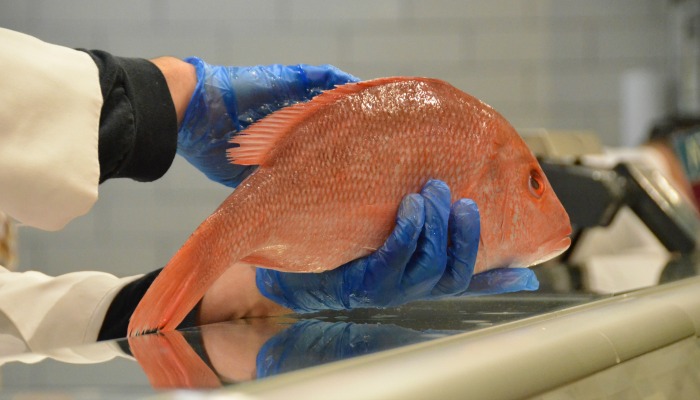Have you heard the hype over red snapper this month? After an extended break to allow the population to rebuild, NOAA Fisheries approved of a limited harvest season in the southeast region (South Carolina, North Carolina, Georgia and the east coast of Florida).
Red snapper is a popular catch by seafood purveyors and anglers, but has been shut down regularly as fisheries managers worked to rebuild the population from overfishing. In the past, any angler who landed the fish had to release it immediately. However, we’ve seen an increase in the red snapper population regionally due to fishing restrictions and other factors. As long as anglers follow the regulations, this limited harvest season should not result in overfishing. However, we’ll need to continue to monitor red snapper to ensure a continuous rebuilding of the Atlantic population.
During two weekends in August, recreational anglers had the opportunity to perfect their fishing practices on red snapper, having the option to keep one red snapper per person per day (with no minimum size limit). For commercial anglers, the limited harvest season opened July 26 and will close December 31, unless the commercial annual catch limit (ACL) is reached, or expected to reach capacity before then.
An added perk of the limited harvest season is that there are citizen scientists readily available to help out NOAA Fisheries and the South Atlantic Fishery Management Council! Anglers are encouraged to record their catch at My Fish Count . This online data platform tracks distribution of the red snapper population, giving us a better look into the future of the fishery.
You’ve caught it, you’ve filleted it, now you have a carcass. What comes next? Drop off your filleted red snapper carcasses at locations set up by South Carolina Department of Natural Resources (SCDNR), so they can collect invaluable data by assessing the age and size of each specimen. To measure age, they remove the otoliths (ear bones) of each fish. Similar to tree rings, a fish’s age can be determined by how many rings are on an otolith!
So, what does this all of this mean for diners? Be on the lookout for local red snapper on the menus of Good Catch partners and make sure you are asking where your seafood is coming from before you order! This practice helps to let the restaurants know we want to support our local fisheries and will encourage more local sourcing in the future.


